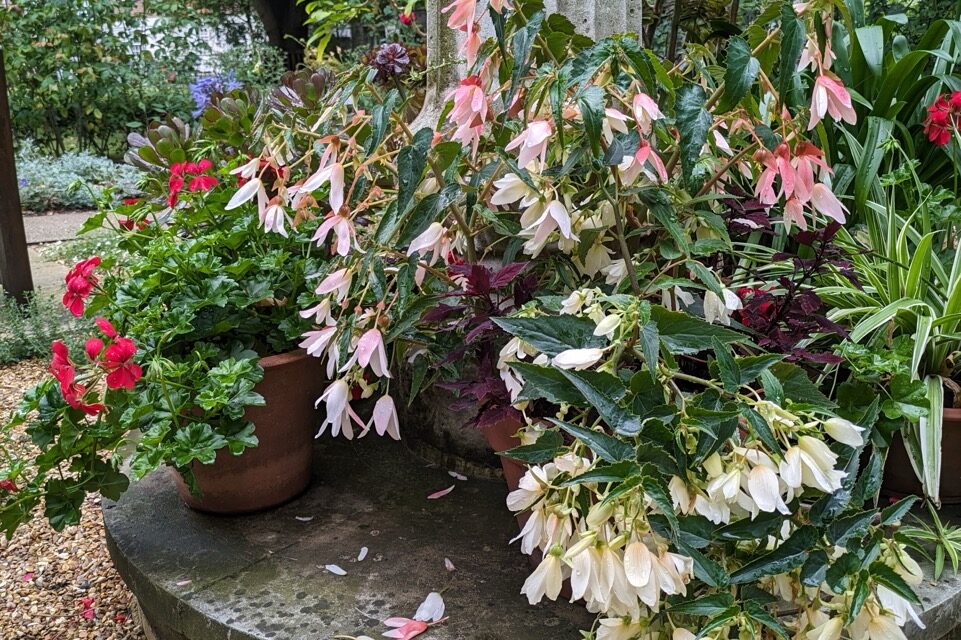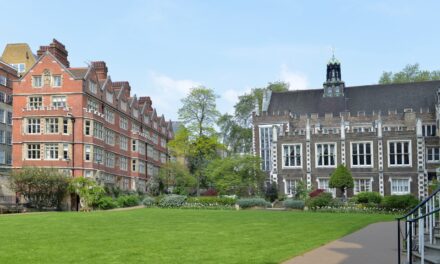The editors of the Middle Templar request their copy early in the year, so I am writing this in April 2024. As I write, the view from Fountain Court through the wisteria across to the Rosa banksiae stretching high up the west wall of Hall is the most glorious sight. As this annual splendour was unfolding, our Head Gardener, Kate Jenrick, received the happy news that Fountain Court had won the Cutlers Hall Trophy for Flowers in the City in Winter.
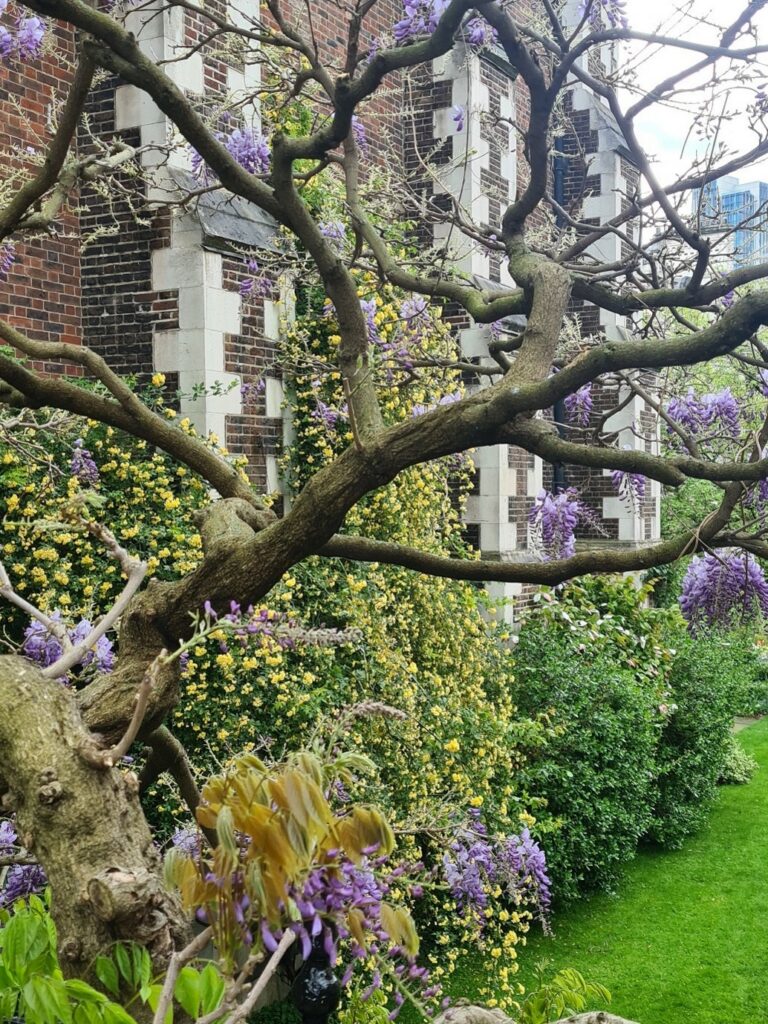
The Sundial Garden
One of Kate’s projects since 2023 has been her redesign of the Sundial Garden. This area, at the foot of the lawn, had become a somewhat desolate and dated space comprising paving slabs and concrete benches arranged around the sundial and concealed behind a tall curtain of shrub roses. Kate has transformed the area, removing some of the roses to open up the view of the sundial from Hall and replacing the paving with gravel. There is now a circular dry garden into which Kate has planted lots of sun-loving perennials, many of them with fragrant leaves. They include thyme, perovskia, salvias, iris, asters, kniphofia, agastache, centranthus, and much more. With seating on the way, this should become a peaceful spot for sensory pleasure.
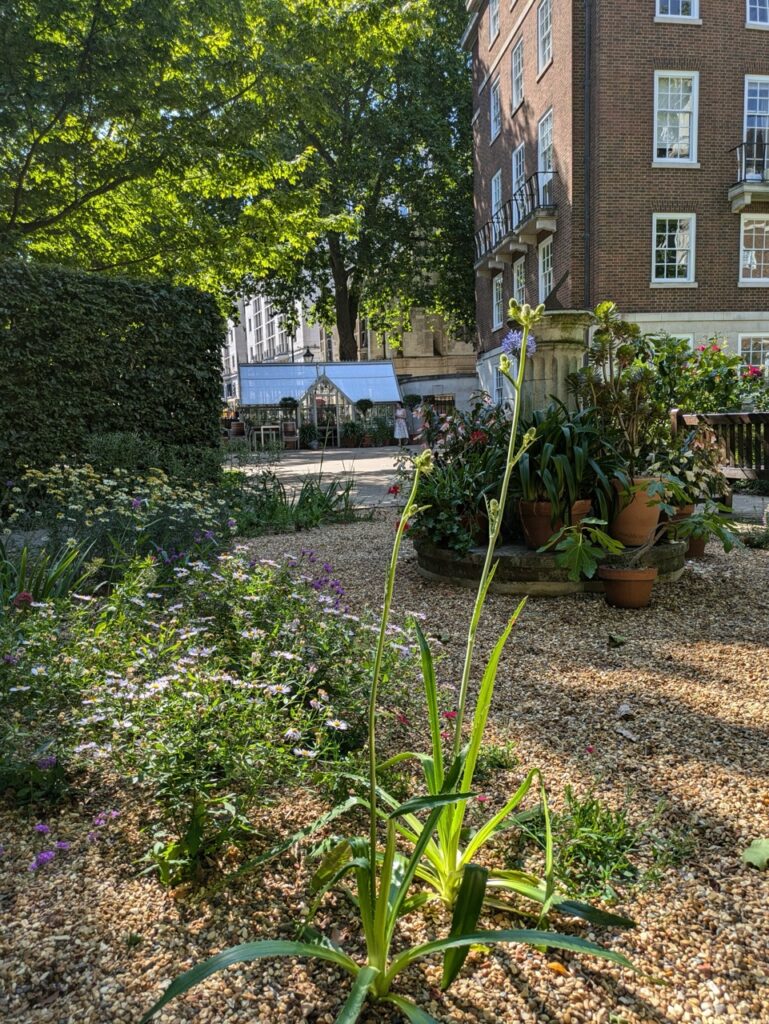
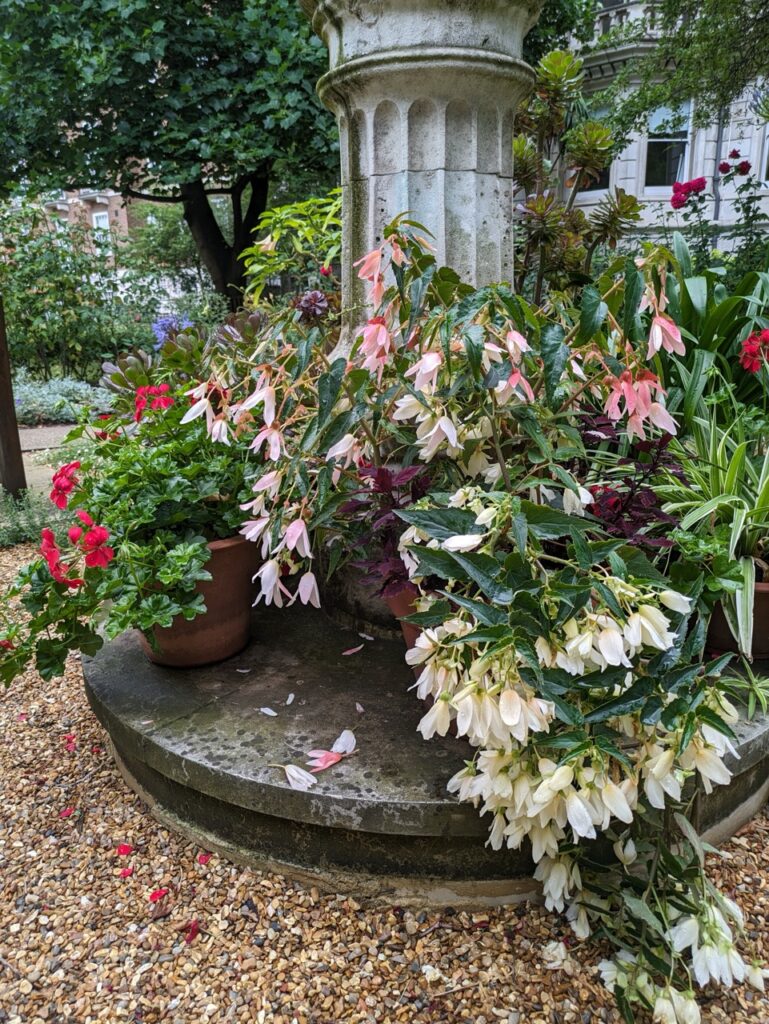
The re-designed Sundial Garden
New assistant for Kate
In other news, Kate has a new assistant gardener, Fiona Packe, who joined the gardening team in September 2023. Middle Temple is Fiona’s first permanent placement after a number of years as a self-employed gardener in Essex. Fiona started adult life anticipating a rather different career, studying textiles and weaving at university.
Prior to joining the Inn’s team, Fiona had the great good fortune to win placements at some of England’s most iconic gardens. They included Great Dixter, the home of the late Christopher Lloyd, where she worked for Head Gardener Fergus Garrett; Charleston Farmhouse, home of Vanessa Bell and Duncan Grant, where she worked for Head Gardener, Harry Hoblyn; the gardens of the late Beth Chatto; and, latterly, Gravetye Manor, where she spent the summer of 2023 tending the hotel’s kitchen garden for Head Gardener Tom Coward. This is when she saw the advertisement for assistant gardener at Middle Temple. Fiona came to visit the Inn and felt this place was for her. She was particularly taken by the various courtyards, and it is now one of her responsibilities to look after the raised beds hidden away behind Temple Church, where she cultivates from seed an elegant and decorative array of vegetables and fruit.
I asked Fiona for her top tips for us amateur gardeners. They were, firstly, to use rolled up newspaper in the base of planting holes, to help retain moisture for longer after watering. It works well for her tomatoes and beans in the Churchyard beds. Secondly, instead of wasting twine by cutting off bits and finding they are too short, make it a habit to keep the spool in your pocket and only cut the twine after you have done your tying in. Thirdly, when you are ready to remove died back annuals, just cut the plant to the base. The roots will rot in the ground and provide nutrients for the next planting. Finally, store your seeds in the fridge.
A garden plant that Fiona would particularly recommend: althea cannabina – a favourite of Beth Chatto, tolerant of most conditions, and tall and airy with pale pink ‘mallow’ flowers. (A word of warning: it can self-sow prolifically in some garden conditions).
And now a few words from Kate, about beekeeping at Middle Temple
Over 12 years on a rooftop with fine views of the Royal Courts and the River Thames I have experienced the usual trials and tribulations of beekeeping. I’ve lost colonies, have successfully handled artificial swarms and produced a few jars of Middle Temple honey along the way. During the summer of 2022, the colony died out when the Queen stopped laying.
Honeybees arrived at Middle Temple as part of an initiative by the City of London to establish several rooftop hives to take part in its summer Festival. Its stated aims at that time in 2010 were to enhance biodiversity within the Square Mile and to provide an innovative example to others of the scope for successful and productive bee keeping throughout our towns and cities.
Urban beekeeping has certainly taken off. Greater London supports 7400 honeybee colonies and across Europe, city beekeeping has been growing rapidly.
However, city centres with large numbers of beehives are seeing bee (wild species) numbers fall. A recent study in Paris found wild bee numbers reduced by half within 500 metres of managed urban apiaries. Other studies are making the same findings. The London Beekeepers Association is now raising awareness of this issue amongst its members.
Research is ongoing as to why a large concentration of honeybees negatively impacts other bees. Many factors are at play, including the honeybee’s size and ability to fly further distances than its wild relatives. Working in large numbers with special social communication systems, they can exploit competition near a hive. Many of the other species of bees are solitary; some cannot fly as great distances as the honeybee and others are really disadvantaged because they are fussy feeders – dependent on just one or two species of plant.
In 2020 an organisation, Pollinating London Together (PLT) was set up in the City of London with a mission to enhance green spaces in its locality so that pollinators – bees, flies, wasps, butterflies and more – can thrive.
PLT is gathering data at various locations across the City, including Temple. Last year 16 species of bees were identified at Temple. Across the City, a total of just 23 bee species, two wasp species and two species of butterflies were recorded. Happily, a rarely spotted solitary bee Melitta haemorrhoidalis was recorded in Fountain Court. This bee only feeds on bellflowers (Campanula spp.)
What has emerged from the surveys is that the honeybee is significantly the most common bee – 70% of all bee sightings was a honeybee.
In my role as Head Gardener, I can encourage different habitats and select a range of nectar rich plants to provide forage for different pollinators. The Pollinating Patch (near Blackstone Chambers) has very varied nectar rich plants and a small section of it is being left undisturbed to encourage ground nesting bees (which several years ago were there – I had to mow round the nest!). We are monitoring numbers – a steep learning curve in identifying different bees. Last autumn PLT ecologist Konstantinos Tsiolis delivered a very interesting lunchtime talk about bees which I hope can be repeated. And, with a heavy heart, I will not be restoring a bee colony at Middle Temple.
The most important take home from this piece: the honeybee is not in decline in the UK nor globally. The honeybee is just one of 270 species of bees, and in city centres where the honeybee is being introduced this is having a negative impact on bee populations.
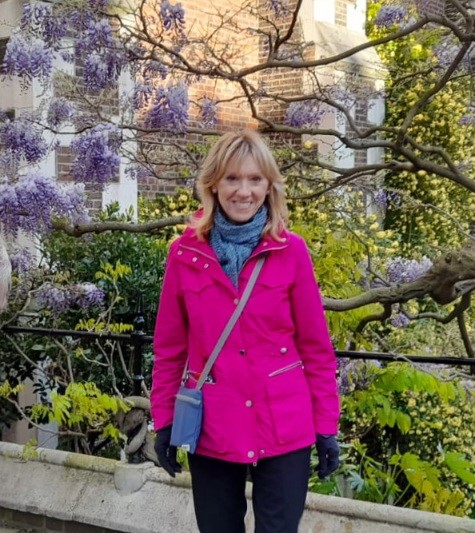
Master Adrienne Page was elected a Bencher of Middle Temple in 2003 and is Master of the Garden. She has a specialist practice in media and communications law at 5RB, where she is joint Head of Chambers.

